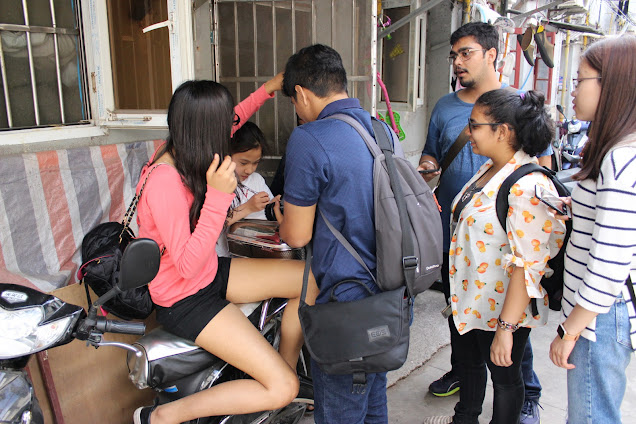Review / Line of Light
Published in Art India, May 2017
Try to look hard and you will see the landscapes in Kanji typographic characters. Manisha Parekh’s Line of Light at the Jhaveri Contemporary, Mumbai, from the 7th of February to the 4th of March, makes this translation quite obvious.
Linguistic studies demonstrate how the symbol for a mountain in the Kanji script is derived from three peaks, while that of a tree is visibly rooted in the ground with a free end in the air. Originally diagrammed from their actual visual counterparts, Parekh’s intervention overlaps these Japanese ideograms with images, pressing us to think of nature itself as a script. Five dark indigo-dipped papers explore this script using Braille-like formations pierced by a sharp stylus. The form and medium dissolve within each other in Parekh’s Gratitude giving rise to a productive ambiguity that emphasizes multiple readings. She suggests we look closely at how in forms animated and static, nature leaves behind a communicative trail to be deciphered and decoded.
These works presented by Parekh were originally produced as part of a residency in 2013 at the Aomori Contemporary Art Centre in Japan, built by architect Tadao Ando, whose buildings, as many may know, bring individuals in very emphatic confrontation with nature.
-->
Published in Art India, May 2017
Herscript
Manisha Parekh’s works has Anuj Daga reading between the lines.
Try to look hard and you will see the landscapes in Kanji typographic characters. Manisha Parekh’s Line of Light at the Jhaveri Contemporary, Mumbai, from the 7th of February to the 4th of March, makes this translation quite obvious.
Linguistic studies demonstrate how the symbol for a mountain in the Kanji script is derived from three peaks, while that of a tree is visibly rooted in the ground with a free end in the air. Originally diagrammed from their actual visual counterparts, Parekh’s intervention overlaps these Japanese ideograms with images, pressing us to think of nature itself as a script. Five dark indigo-dipped papers explore this script using Braille-like formations pierced by a sharp stylus. The form and medium dissolve within each other in Parekh’s Gratitude giving rise to a productive ambiguity that emphasizes multiple readings. She suggests we look closely at how in forms animated and static, nature leaves behind a communicative trail to be deciphered and decoded.
These works presented by Parekh were originally produced as part of a residency in 2013 at the Aomori Contemporary Art Centre in Japan, built by architect Tadao Ando, whose buildings, as many may know, bring individuals in very emphatic confrontation with nature.
The installation Shadow Garden draws closely from the architecture of fuki leaves – those that stand on a singular stem upright on the surface they grow on. Competing with each other for light, these leaves form a shaded canopy that creates an environment where new microcosms can flourish. Tracing the paths of worms that feed on these leaves, Parekh attempts to map the conversation between different forms of life. Further, the veins of the leaves are suggested by the grain of the cypress wood in the artist’s reconstruction, bringing us to think about the contrasting attributes of young and old, soft and hard, life and death – as thought of in eastern philosophy –simultaneously. Life merely occurs in between these extremes as seen in the punched worm trails on the abstracted substrate.
Within the framework of nature and script, Parekh’s paintings attempt to formulate new ideograms that can expand the limits of experience. Tangled Foot works through three amorphous shapes in indigo, gold and a stippled swatch freely moving in space and frozen into different configurations. If the conceivable world is limited by language, can Parekh’s drawing project open up new environments that can be inhabited though experiments in abstraction? Can their interpretations hint at multiple meanings similar to the manner in which pitch accents change words in kanji pronunciation? Invisible Notes furthers this attempt by presenting to us a hundred possible contemporary Japanese hieroglyphs drawn in a sparkling silver watercolour on handmade paper. The artist’s endeavour to collapse art and the medium of art into each other challenges the distance between the human world and the natural world created and mediated by language.
Manisha Parekh. Shadow Garden. Japanese cypress wood and Indian silk. 100 units. Variable dimensions. 2013.
Within the framework of nature and script, Parekh’s paintings attempt to formulate new ideograms that can expand the limits of experience. Tangled Foot works through three amorphous shapes in indigo, gold and a stippled swatch freely moving in space and frozen into different configurations. If the conceivable world is limited by language, can Parekh’s drawing project open up new environments that can be inhabited though experiments in abstraction? Can their interpretations hint at multiple meanings similar to the manner in which pitch accents change words in kanji pronunciation? Invisible Notes furthers this attempt by presenting to us a hundred possible contemporary Japanese hieroglyphs drawn in a sparkling silver watercolour on handmade paper. The artist’s endeavour to collapse art and the medium of art into each other challenges the distance between the human world and the natural world created and mediated by language.
Manisha Parekh. Shadow Garden. Japanese cypress wood and Indian silk. 100 units. Variable dimensions. 2013.



































